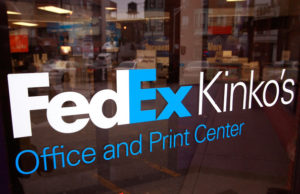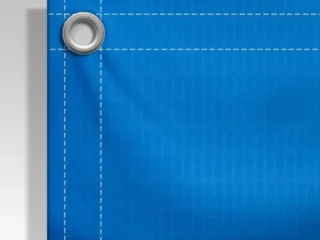Last Updated on October 25, 2022 by Carlos Alonso
Photo by You X Ventures on Unsplash
E-learning is experiencing a boom right now, due to the fact that the majority of the world has been stuck in their houses for most of 2020. Skill sharing sites in all sorts of interests and niches have grown, almost overnight, it seems. And along with that boom in educational sites comes the corresponding boom in individual tutors and creators.
If you yourself create e-learning courses, what does that mean for you?
Put simply, it means that you now have that much more competition.
In fact, you could be one of the new tutors or creators that have been inspired by recent events. Maybe it’s finally your time to buckle down and teach people about your passion.
Whatever your situation, the upshot is the same: you are competing with perhaps dozens of other creators with similar skills. And your audience won’t know your true value until they actually take your course.
Which begs the question: how do you attract an audience to your e-learning courses?
That’s where branding comes in.
Branding For E-Course Creators
You may not think that e-courses require branding the way other companies or creators might. After all, the main strength and merit of an e-course is the information that it contains. Right?
Not exactly.
E-courses aren’t just about the information they teach, but about how they teach it. Just like all of us had our favorite teachers back in high school, the way the information is disseminated can be just as important as accuracy and practicality.
Branding can be viewed as an extension of the teaching style.
What if you’re just a creator, rather than a teacher? You may create several courses and then hand them over to other individuals to bring their unique style to the coursework.
But your own personal style of educating is still important, and so you should build your brand around that regardless of whether you actually have contact with the students or not.
Of course, this doesn’t mean that accuracy and practicality aren’t important factors in creating an e-learning course, too. Apart from getting a teacher logo for branding, other factors like the following can also be incorporated into branding.
Make sure to include a “brand story” of sorts in your marketing materials, personal website, or biography section on your e-learning site. Include elements such as:
⦁ What drew you to the information you’re teaching
⦁ Why it’s important to you personally
⦁ Course highlights that resonate with you
⦁ Brand traits, highlighting things like your emphasis on accuracy and practicality, a broad-minded approach, visual learning style, etc.
Taking the personal approach, and ensuring that you deliver on your promises, helps to build loyalty to your brand. When one of your students sees that they get accurate, reliable information that works for their learning style, they’re more likely to seek your other courses out.
So your personal branding benefits your customers, because they know what they’re getting. And it benefits you, because it draws new customers in and helps you stand out from the competition.
Now you know why you should include personal branding — but what about how to do it?
Setting You Apart From The Competition
Certain elements are often included in branding style guides, which keep branded visuals in harmony and on-point for the brand:
⦁ Visual style
⦁ Color palette
⦁ Font choices
⦁ General layout
⦁ Messaging
All of those should be incorporated into your personal branding for your e-learning courses. But there are a few others that can be included as a general guide to overall e-course branding.
⦁ Personal elements. What makes you unique? If you’re a creator without being a teacher, you likely have some harmonious elements throughout your courses that mark each one as being your product. If you are a creator and a teacher, your personality, sense of humor, goals, and values can all be included in these personal elements. What makes you you? What makes you passionate about what you’re teaching?
⦁ Course-specific images. Part of branding is creating a bridge between yourself and your audience. Use course-specific images, such as images of workplaces or tools that your audience is familiar with, helps to create that bond and allows your audience to identify with what you’re presenting to them.
⦁ Branded templates. You’ll probably want to mix your coursework up a little in terms of layouts, but sticking with a harmonious color palette and branded images, like logos, throughout the course will help bring it together. It builds a sense of familiarity for the audience, as well.
⦁ Branded infographics. Infographics are one of the most popular options for visuals, as we tend to learn faster when using visual aids. Structure your infographics in a way that is unique to you and easy to learn from, and stick to that structure throughout your course and in supplementary and marketing material.
All of these elements build your brand from the front end. The next step, of course, is to make sure that you deliver on what you’re promising to your customers — make your material as good as it can possibly be.
But that’s not where branding ends.
Extending Your Branding
Branding incorporates every point of contact between you and your audience. So it doesn’t stop once they’ve completed your course.
As we saw in the first section on why you should brand, good branding enhances loyalty. So if you stand by your brand and really give your customer your best, you can expect to see repeat attendance and enrollments.
But branding isn’t all positive feedback, all the time. Sometimes, you’ll get a customer complaint or a problem that needs to be dealt with. Keep in mind that how you react to this is also a vital part of branding.
It’s even more important in personal branding — because your brand involves you. With small-scale branding, your personality is completely intertwined with your brand personality. When people watch your course, they’re not just getting your brand — they’re getting you. How you behave as a teacher, as a businessperson, and as a person in general should all be harmonious. That’s the only way that you can present a consistent brand — and consistency is key for good, effective branding.
So how you react, on a personal level, to problems and issues will reflect on your brand. View problems as an opportunity, rather than an obstacle. If someone has an issue with something you teach, or how you teach it, don’t ignore it. Reach out, try to correct the situation, and apologize sincerely — it’s worth it for the enhancement of your branding that will ensue.
Remember, you’ve got a lot of competition. But, especially in e-learning courses, the instructors often speak for themselves. With careful attention to personal branding, you can build a loyal audience that elevates your courses above the competition.
Author Biography
Betty Shane works as a professional blogger for multiple websites. Her work as a freelance content writers allows her to explore diverse topics including but not limited to digital marketing, business and design.














